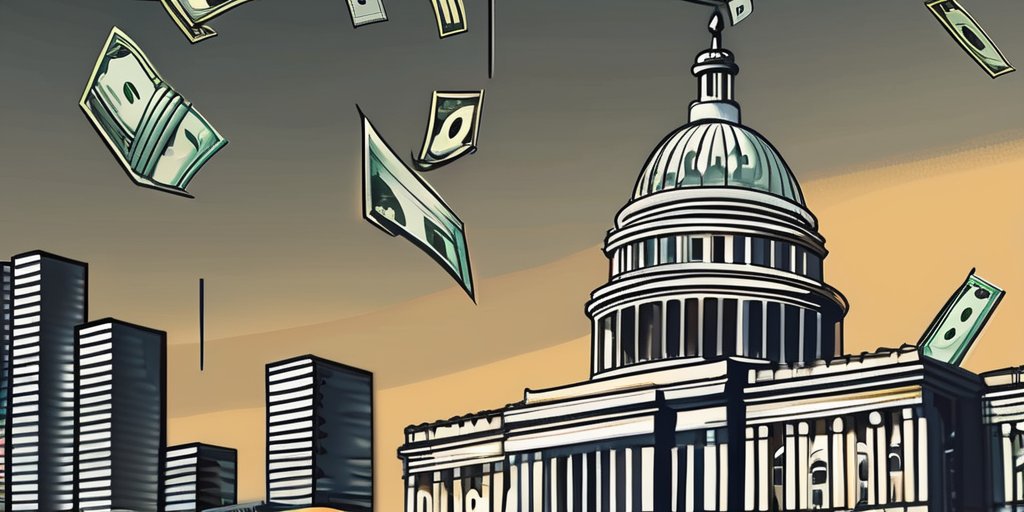The sweeping Republican budget bill advancing through Congress is quickly highlighting a serious division within the modern GOP electoral coalition. This legislation emphasizes a longstanding tension between the party’s strategy aimed at financially squeezed working-class voters, and an economic agenda that primarily benefits the affluent. Uniquely positioned within this bill is the pairing of significant spending cuts, which are anticipated to adversely impact families earning below the median income, with considerable tax cuts that favor wealthier households.
Historical perspectives reveal that while tax bills favoring the wealthy have often surfaced in the Republican camp, none has been so starkly juxtaposed with cuts to aid the needy. According to Harris Eppsteiner, an economic analyst at Yale University, this budget’s linkage of Medicaid cuts—programs that directly affect low-income families—with tax cuts for the top earners is unprecedented in recent decades.
The political implications of this bill are substantial. Democrats are banking on a voter backlash to propel their efforts in the upcoming 2026 midterm elections. They are keen to underline the cuts to Medicaid and health care against a backdrop of tax cuts primarily benefitting the wealthy. Democratic pollster Nick Gourevitch stated, “It’s a powerful thing to be able to say they are cutting Medicaid and people’s health care to fund a tax cut for the wealthiest people.”
In response, congressional Republicans are mounting defenses, emphasizing the populist elements of their tax plan, while presenting Medicaid cuts as welfare reform intended to preserve benefits for those in genuine need. Historical patterns show that Republicans have frequently deflected criticisms from Democrats by painting them as excessively liberal on social issues such as crime and immigration.
However, the ambitious scope of this budget bill poses a genuine test for Republicans. The Congressional Budget Office estimates that stripping away health insurance from approximately 16 million Americans and drastically cutting food assistance could be at stake, while simultaneously offering tax cuts averaging over $100,000 yearly to the top 0.1% of earners. This, as per fiscal policy experts, could constitute the largest wealth transfer from low-income families to the wealthy in U.S. history.
Discontent among voters has already surfaced. Messaging from groups like ‘Unrig the Economy’ is actively targeting Republican representatives, highlighting their support for a bill that cuts Medicaid to fund tax breaks. The contention resonates strongly among constituents, particularly in districts where Medicaid plays a critical role in community health.
Historical perspectives on Republican tax strategies indicate a significant departure from past practices. Unlike previous years, where tax cuts were largely decoupled from spending reductions, the GOP, under heavy pressure from hardline conservatives, is merging the two. Comparisons to mid-1990s fiscal policies signal a politically risky maneuver, reminiscent of the contentious clashes led by former Speaker Newt Gingrich and former President Bill Clinton.
Despite the GOP’s historical strategies of offering tax cuts without altering expenditures, the current legislation allows explicit analysis of its winners and losers. Analysts routinely conclude that families at the lower end of the income ladder stand to lose considerably more due to spending cuts than they would gain from tax savings.
Moreover, today’s Republican voter base has evolved significantly since the 1990s. A greater proportion of the party’s supporters are now reliant on government safety net programs, which intensifies the challenges faced by Republican politicians advocating for drastic cuts. Polls indicate that many of these working-class Americans view changes to Medicaid with significant concern.
GOP hopes hinge on effective communication about the proposed tax and spending measures, with particular stress on work requirements and penalties for states extending benefits to undocumented workers. Yet, numerous polls suggest a sharp divide in public sentiment, particularly among minority voters who express strong apprehension regarding potential health care cuts.
In conclusion, the intersection of tax and spending policies presents not only a pivotal moment for the GOP but a palpable electoral risk as well. The branding of this budget bill, referred to by President Trump as the “One Big Beautiful Bill”, could simultaneously strengthen ties within the party while sowing seeds of dissent among the very constituents they seek to engage. As voters react strongly to shifts in health care policy, the GOP must tread carefully in navigating this political tumult, ensuring they do not alienate essential voter demographics in upcoming elections.
